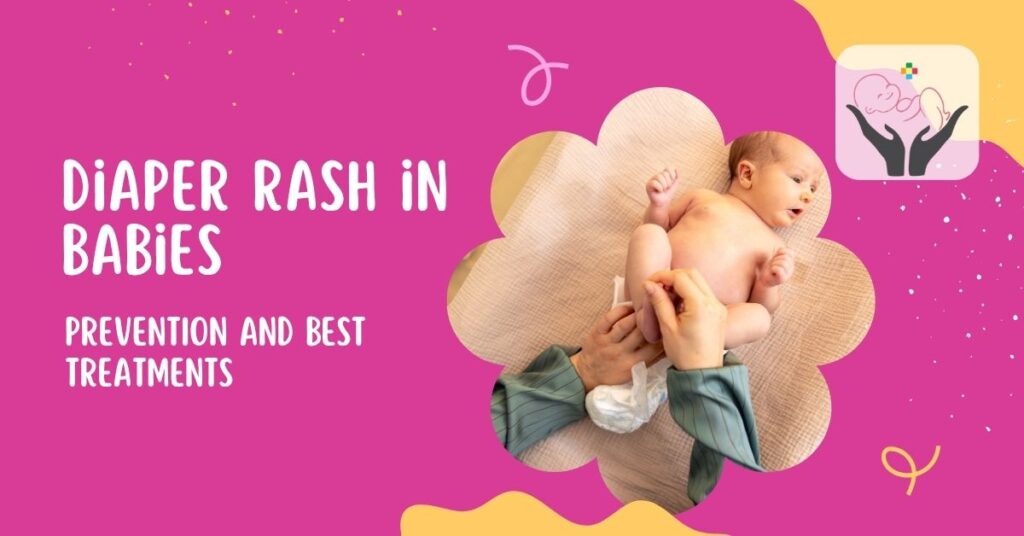Understanding Diaper Rash in Babies
Diaper rash in babies is one of the most common skin concerns faced by parents during infancy. Characterized by red, irritated, or inflamed skin in the diaper area, diaper rash can cause significant discomfort to the baby if not managed promptly. Knowing how to prevent diaper rash and identifying the best treatments for diaper rash are essential steps in maintaining your baby’s skin health and overall well-being.
Parents often search for reliable information on how to treat diaper rash, what causes it, and what products are safe. This blog aims to offer clear guidance on both preventing diaper rash in babies and selecting the most effective and gentle treatment options available.
Causes of Diaper Rash in Babies
Before diving into treatment, it is important to understand what causes diaper rash in babies. Diaper rash usually develops due to prolonged contact of the baby’s skin with moisture, friction, and irritants. Some of the common causes include:
- Prolonged exposure to wet diapers
- Chafing due to tight-fitting diapers
- Reaction to scented baby wipes or soaps
- Introduction of new foods causing acidic stool
- Use of antibiotics (for the baby or breastfeeding mother)
Diaper rash in newborns and infants can escalate quickly if not addressed with proper hygiene and care routines.
Signs and Symptoms of Diaper Rash
Recognizing early signs of diaper rash in babies helps in timely intervention. Common symptoms include:
- Red patches or inflammation in the diaper area
- Warm skin around the buttocks, thighs, or genitals
- Irritability or discomfort during diaper changes
- Peeling or cracked skin in severe cases
If the diaper rash does not improve within a few days or worsens, it may be a sign of a yeast or bacterial infection, which requires pediatric consultation.
How to Prevent Diaper Rash in Babies
Preventing diaper rash is possible through consistent hygiene and the right choice of baby care products. Follow these steps to avoid diaper rash in infants and toddlers:
1. Frequent Diaper Changes
Change your baby’s diaper regularly, especially after every bowel movement or every 2 to 3 hours, to avoid prolonged moisture exposure.
2. Gentle Cleaning Routine
Clean the diaper area with lukewarm water and a soft cotton cloth. Avoid using scented or alcohol-based wipes that can irritate sensitive skin.
3. Pat Dry, Do Not Rub
Always pat the skin dry gently instead of rubbing, which can cause micro-tears and lead to rash development.
4. Allow Diaper-Free Time
Give your baby time without diapers during the day to allow the skin to breathe and recover naturally.
5. Use Barrier Creams
Apply a thin layer of barrier cream containing zinc oxide or petroleum jelly as a protective layer to reduce friction and moisture contact.
6. Choose the Right Diaper Size
Ensure the diaper fits well but is not too tight. A snug but not constrictive fit prevents rubbing and retains airflow.
Best Treatments for Diaper Rash in Babies
If a rash develops, treating it with the right methods is essential for quick recovery. Here are some of the best treatments for diaper rash that are both safe and effective:
1. Diaper Rash Cream with Zinc Oxide
A cream containing zinc oxide forms a strong protective barrier and helps soothe inflammation. It is widely recommended by pediatricians for moderate to severe rashes.
2. Petroleum Jelly
For mild diaper rash, petroleum jelly is effective in sealing out wetness and preventing friction without irritating the skin.
3. Antifungal Cream (Prescribed)
If the diaper rash is due to yeast (often seen after antibiotic use), a pediatrician may recommend a mild antifungal cream.
4. Oatmeal Baths
Adding colloidal oatmeal to a lukewarm bath can help relieve itching and calm the skin in babies experiencing widespread rash.
5. Avoid Harsh Soaps
Stick to fragrance-free, hypoallergenic cleansers until the rash clears completely.
Do not use talcum powder or adult skin ointments unless specifically advised by your child’s doctor.
When to Consult a Pediatrician
While most diaper rashes can be treated at home, some cases require medical attention. Visit your pediatrician if:
- The rash is persistent beyond 3 days despite home care
- You observe open sores, pus, or oozing blisters
- The baby develops a fever or unusual behavior
- The rash spreads beyond the diaper area
Getting expert guidance ensures your baby receives the right treatment without any complications.
Conclusion: Diaper Rash Management Made Simple
Diaper rash in babies can be prevented and managed effectively through consistent hygiene, smart product choices, and quick intervention. Understanding the causes, symptoms, and safe remedies empowers parents to act promptly and keep their baby comfortable.
By following the right routine and using suitable products, parents can minimize the occurrence of diaper rashes in infants and toddlers and promote healthy skin development.
For recurring or severe cases of diaper rash, always consult a qualified pediatrician for accurate diagnosis and treatment. At Pediatric Newborn Clinic, we provide expert newborn baby care in Greater Noida West to support your baby’s growth at every stage.



